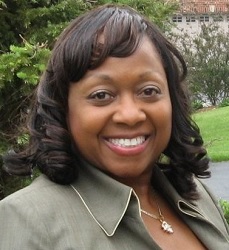An Interview with Author Dr. Dorothy Campbell

Dr. Dorothy Campbell
Member
The Registry
What is some of the surprising feedback you have received about your book, both positive and critical?
On Amazon.com, the book has received five stars and has gotten quite a few reviews. So, I was pleased and happy to see that. When you put something this controversial out there, you don’t know how it’s going to go.
What do you believe a sitting administrator could do today to make a difference in terms of moving the ball forward on diversity and inclusion in all its forms?
One, I think a sitting president should read books like this one; I am not saying it has to be this one but read books like this one. Second, hire people who have expertise and have had success in hiring people who can foster diversity and help to change the culture. Third, listen to those people and make sure that diversity permeates through all of the operations of that campus. The reason I say that is because it really is leadership at the top making the right decisions in hiring and retaining the right people that makes the difference over the long term. Your organization is only as good as the people are.
Suppose you go into an institution as an interim, and you know that you’re going to be there for maybe six or twelve months at most. The president comes to you and says that she wants to make diversity a top priority for the campus. What are your first two or three steps to make that happen? How do you introduce these topics to a faculty or to staff that might otherwise be skeptical?
Before I do anything, I look at what the mission statement says. I look at where the institution says it wants to be going in terms of its diversity and inclusion goals, and then I compare that to where it is. Most every college and university will say that they value diversity and inclusion. Will they do anything about it or not? That’s the question. Once I have identified the mission, then I can use it to leverage the change I have been asked to make. I can point to the institution’s mission and say, according to our goals, this change is important.
For example, we know that student retention is important. We have the data to know where our students are coming from, and we know that their backgrounds may be different from ours. So, I would explain to the faculty and staff what those differences might be and how that will impact our retention of these students. In the case of faculty, I would go right to the Deans because the Deans deal directly with the faculty. If the Deans don’t understand the importance of what we’re trying to accomplish, it’s difficult to ask them to pass that message on to the faculty.
What made you want to write this book? What elements do you feel makes it unique compared to existing literature?
Many books that I looked at talk about diversity in a broad sense, at all levels within the organization. I wrote this book to really focus on senior administrators, where so many other books on this topic do not focus on that level of leadership. Also, some of the books I read did not focus on the importance of communication; this book does. For example, in this book we discuss not only the importance of what an administrator says but also the body language they carry when delivering the message. This book talks about how administrators dress relative to their students and how that may fuel perceptions on campus. How is the way your office is decorated perceived by different campus cultures, and how does that influence the way students engage or do not engage with you? To answer questions like that, this book talks about what I call “space fragility.”
Reflecting on the notes that I took down from your book, one of the themes that I have underlined a hundred and one times is the idea that diversity doesn’t happen by accident. Nobody walks onto a campus, or into a cabinet of officers, and finds themselves suddenly surrounded by the most diverse student, faculty, or administration ever found. The message I drew from your book is that Diversity is a proactive behavior, not a passive one.
Well that’s great, I am glad it worked. You have to work at diversity and inclusion all the time. Culturally, you work to get to a point where it’s just the way of doing business on campus. Diversity and inclusion should permeate everything. I have encountered so many campuses where, simply because they have hired a diversity officer, there is a sense that—okay—now we can lean back, we’ve handled that. In the meantime, you see faculty and staff perusing the same behaviors and students who are still struggling. In my book, I have tried to address these issues clearly and directly. Thank you for the chance to discuss them in more depth.
HIRE AN INTERIM
Searching for an Interim?
Please contact us for more information.

